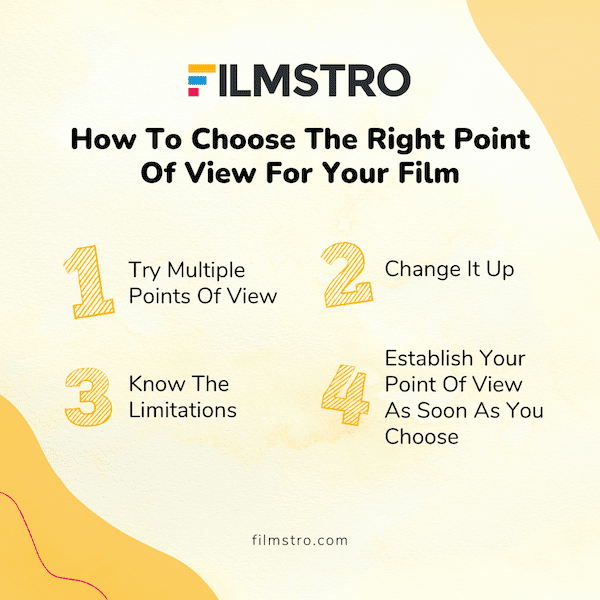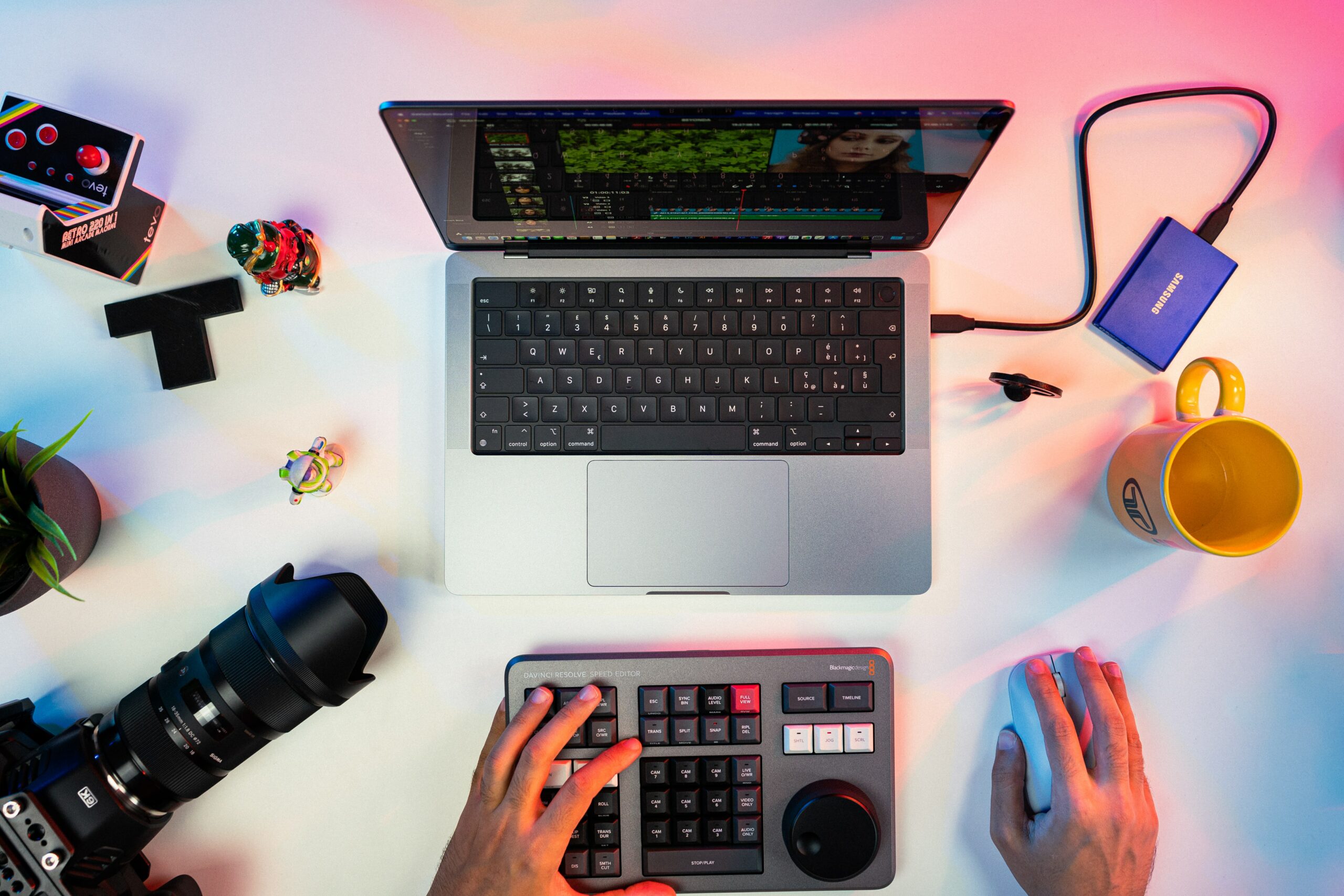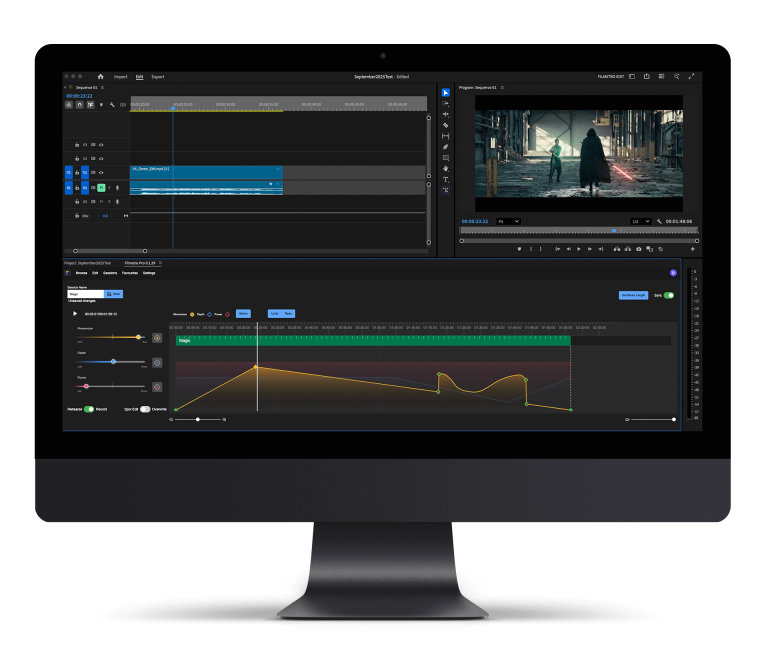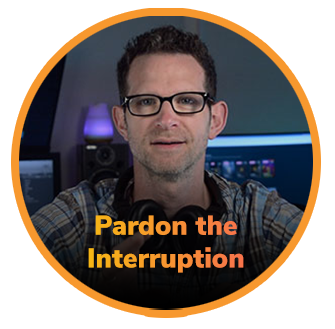Point Of View In Filmmaking: What Is It And Why Is It Important? –
Point of view in filmmaking is one of the most crucial elements. The way the story is narrated, in whose perspective, how is the audience seeing the events unfold, all of this is fundamental and can also be called the point of view in film.
Your point of view is the angle at which you are looking at life. Similarly, point of view in film is the angle from which you are watching the scene take place. When making a film or any video project, determining the point of view you will use is essential.
Different point of views can make the audience feel different emotions when they watch a film or video. You need to find out which point of view will suit your story and script the most and use it to create maximum effect.
Before we get into the types of point of view in filmmaking, you need to understand what a point of view really is.

What Is Point Of View In Filmmaking?
Point of view is a term that is used to describe how a person views a situation. In literary terms, it is the angle from which a story is being told. A point of view in film can be first person, second person, or third person.
The first-person point of view has been used in movies and television many times. It tells us the story through the thoughts of one character, and we watch as they go through all the experiences and events. In the first-person point of view, the narrator tells the story through his own words, and we only know what they know.
The second-person point of view is used in movies for fourth-wall breaks and as an element of excitement. The second-person point of view is when the character in a movie or series addresses you directly. It does not happen that often, but there are instances where the fourth wall is broken. Using the second-person point of view for the entirety of the project can be challenging, which is why it is not done often.
The third-person point of view is the perspective used most commonly in films and television. It tells the story through the eyes of an ideal observer. In the third-person point of view, the narrator tells the story about someone else. This point of view puts the camera outside looking in, which means we are just watching the events unfold without anyone noticing our presence.
Why Is Point Of View In Film Important?
Point of view is one of the most important aspects of a film or any video. It controls everything: from how the audience meets all the characters and the world of the movie to how they watch all the events take place. The point of view in film you choose can be the determining factor when it comes to how much the audience will enjoy your movie.
The point of view used in the film or television series is the deciding factor when it comes to the audience understanding the story and characters. Although it might not seem like a big deal at first, but it determines how people will view and interpret the story and how much impact the movie or series will have on the audience.
The point of view can be used for various elements of storytelling. For example, you can use the point of view of your film or video to:
- Create mystery or suspense
- Reveal a character and their views on the world
- Add a comedic element
Types Of Point Of View In Film
Subjective Point Of View In Filmmaking
Subjective point of view in filmmaking can be restricting for filmmakers. It is usually the first-person point of view, and the audience can only watch all the events and characters that the narrator sees around them. It is not as commonly used as the objective point of view because using the subjective point of view in filmmaking can create many problems.
For example, the audience can never find out how the character being used for the subjective point of view is reacting to all the events taking place. When the subjective point of view in filmmaking is used, the film or series usually focuses on the characters we can see around the character being used for the subjective point of view.
One of the major problems that come with using a subjective point of view in filmmaking is that the audience cannot form an emotional bond with the character used for the point of view. If we can’t see the character, it is more challenging for us to relate to them and connect with them. This is one of the main reasons we see superheroes take their masks off at some point in the movies.
Objective Point Of View In Filmmaking
Objective point of view in filmmaking is one of the most commonly used points of view. It is suitable for most people to work with and tell the story through this perspective. There are two types of objective point of view in filmmaking: limited and omniscient.
The limited objective point of view in filmmaking is used to tell the story and witness all the action taking place through the eyes of an observer. It is the style of perspective that is used most frequently in media. For example, an over-the-shoulder shot or a mid-shot of two characters having an argument or dialogue. It is also used in conjunction with a subjective point of view at times.
The other type of objective point of view in filmmaking is the omniscient point of view. This type of point of view is used to portray the inner feelings or thoughts of the characters. Once again, it is not the most popular perspective because the audience needs to see the character to form a connection. For an omniscient point of view in film or television, filmmakers mostly use narration, voice-over, or graphics that are added with the help of special effects in post-production.
How To Choose The Right Point Of View For Your Film

Step 1: Try Multiple Points Of View
When you start out with your project, you can film a scene with multiple points of view to determine which one suits your style and story the most. Being familiar with all the perspectives and knowing how they look can make your decision easier.
Step 2: Establish Your Point Of View As Soon As You Choose
Once you have selected the point of view you will be using, establish it immediately. Let everyone know the vision you have and film the video or movie using this point of view. Establishing the point of view early on can make the movie appear more put-together and cohesive.
Step 3: Know The Limitations
If you know the point of view you are using for the film or video, you should also be aware of any limitations that it brings. For example, if you are using a subjective point of view in film, you should know that the audience will only see what the character is seeing, and they can only get their knowledge regarding the story through this one character.
Step 4: Change It Up
Even after you have chosen the point of view for your film, you should not feel tied down to it. You can always change it up for a scene and make the movie seem more exciting. For example, you can use the subjective point of view even when you are filming in the limited objective point of view.
Final Takeaway
Knowing the importance of points of view in filmmaking can help you make the right decision when it comes to choosing a perspective for your film or video project. There are various types of points of view in film, and all of them come with their own benefits and limitations. Understanding how to use them effectively is part of mastering essential filmmaking techniques that elevate the storytelling and visual impact of your work.
If you liked this article, you should also check out Four Tips On How You Can Improve As A Filmmaker
We hope you enjoyed this article and don’t miss out on any of our other blogs!
Sign up to Filmstro and follow us on Twitter, Facebook and subscribe to our Youtube channel. You can also check out some of our amazing royalty-free music today by clicking here.








